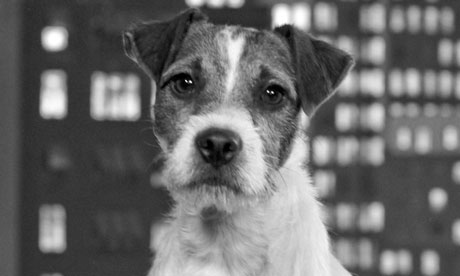 Uggie
Uggie
We were again transported to another time and place—three fabulous and current films, in three weekends. Our wonderfully transportive film nights began with My Week with Marilyn, which takes place in 1956 and was shot in and around the outskirts of London,The Descendants, filmed in present day Honolulu, and last night we saw The Artist, which takes place in Hollywood, from 1927 to 1932. The Artist is a comedy and drama about George Valentin (Jean Dejardin), a silent film star, and Peppy Miller (Bérénice Bejo), a rising “talkie” star, who meet just as the silent film industry is collapsing. The film is partially silent and filmed to look like a black and white silent film. The costumes are to die for, the interior set designs are predominately Hollywood Regency, and the acting charming and sweet and utterly engaging. Uggie, the terrier, will steal your heart.

From an interview with Michael Hazavanicius, director and writer of The Artist, “I had many deep motivations for wanting to make a silent film. As a member of the audience, I absolutely love the way stories are told to me in a silent movie. It’s not a cerebral response. It’s more a child-like response. Because there’s no spoken language, the way the story engages your heart is special. It’s hypnotic, sensual, not at all cerebral, and I love that sensation as an audience member. My motivations as a director were much more selfish. For me, it was a great experience. It’s what cinema is about, in my opinion. I’m telling a story with images and music. With images, you have the actors, you have the sets, you have the costumes, the lights, everything, and that’s how you’re telling the story. You don’t need words for that. It’s the ultimate experience for a director to make a silent movie. I really wanted to try to do it.” Link to the full interview with Hazavanicius.
 Jean Dujardin and Uggie
Jean Dujardin and Uggie
Techno notes for Joey and Marty: The Artist was made in the 1.33:1 screen ratio commonly used in the silent film era. Though presented in black-and-white, it was shot in color. All the technical details, including lenses, lighting and camera moves, were calibrated to get the look just right. To recreate the slightly sped-up look of 1920s silent films, the film was shot at a slightly lower frame rate of 22 fps as opposed to the standard 24 fps. Courtesy wiki.
Images courtesy Google search.
